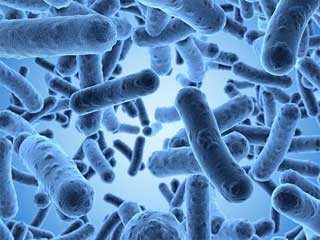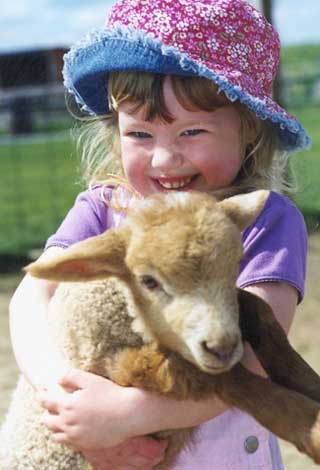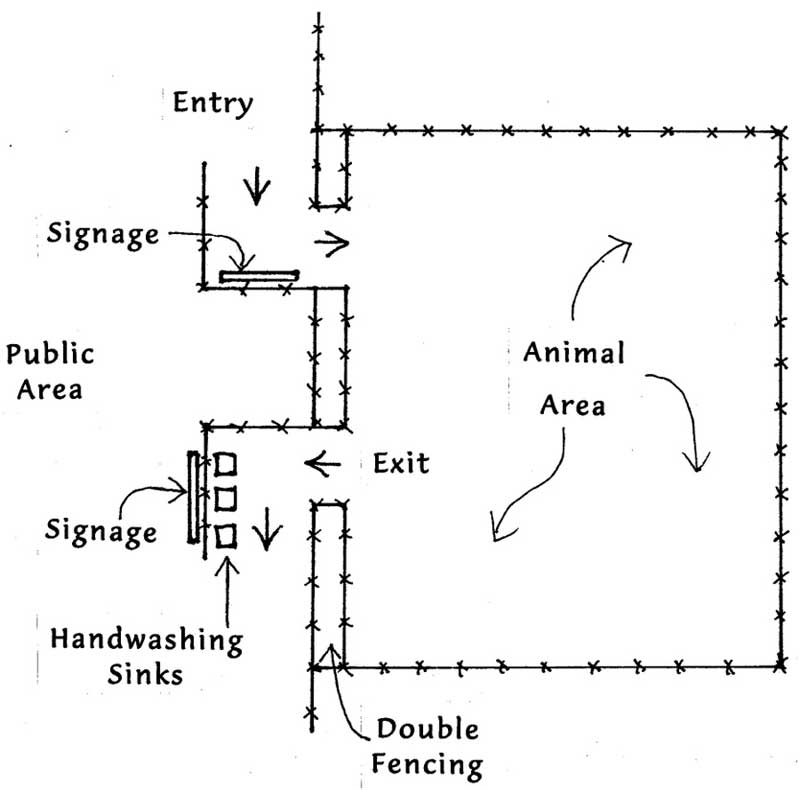
Vol. XIX, No. 5, May-June 2019
- Editor's corner
- A perfect storm is disrupting the legacy location-based entertainment business model - a white paper
- Artainment continues to expand
- Popularity of dogs
- Depalo app for the Instagramming crowd
- Distillery experiences
- Record low births in 2018
- Alcohol preferences
- Protecting guests from E. coli at fairs, festivals and agritainment/agritourism farms
- What is VR, AR, MR and XR?
- Is meat consumption on the decline?
- Roxy Ballroom #2 opens
- Social media users by platform
Protecting guests from E. coli at fairs, festivals and agritainment/agritourism farms
Farm animals, especially ones children can interact with, feed, pet and groom, can be an attraction at fairs, festivals, agritainment/agritourism farms and other venues targeting families with children. Unfortunately, animals can also pose serious risks to children (and adults too) in the form of both injury and illness if the facility is not properly designed, managed and maintained.

E. coli 0157:H7
What poses the greatest risk to petting zoo guests, and also to the very economic survival of any business, is not the animals themselves. It's a microscopic organism that animals can harbor, known as E. coli 0157:H7 or just E. coli 0157.
E. coli 0157 causes human illness through the toxins that it produces that destroy the intestinal wall. Most infections are mild and don't require medical care. A small percentage of cases (approximately 8% of all E. coli 0157 infections) go on to develop hemolytic uremic syndrome (HUS), a life-threatening disease. People who develop chronic kidney failure as a result may require lifelong dialysis or a kidney transplant. Children under 5 years old, who have not yet fully developed their immunities, are especially susceptible to both E. coli 0157 and development of HUS. Of children affected with HUS, 3% to 5% will die, and as many as 30% will have lifelong medical problems.
It only takes as few as 10 germs of E. coli 0157 to cause illness.
Studies by the Center for Disease Control show the highest probability of being infected is from exposure to farm animals, especially cattle. Other ruminants, such as sheep and deer, can also carry the organism. Even dogs, chickens and pigs have been found to harbor E. coli 0157. It is believed they become contaminated by exposure to cattle manure or deer feces. E. coli 0157 is excreted in the manure or feces and can survive for long periods of time on the ground or on the hides of animals. Anything that comes into contact with cattle manure can be contaminated, including ponds, lakes, streams and ground water by field runoff.
E. coli 0157 infections have been traced to manure dust in areas where cattle had been removed 10 days earlier. Contamination E. coli 0157 infections from airborne dust was implicated in an outbreak that sickened 60 people, most of them children, none of whom had touched animals. Research shows that E. coli 0157 can live for months in animal bedding and soil.
The first E. coli 0157 outbreaks on farms or at petting zoos occurred in 2000 when 56 preschool and school-age children became sick after visiting agritainment farms in Pennsylvania and Washington. The CDC did an exhaustive scientific study of both outbreaks and traced the infections to children petting animals or just touching the railings of the animal pens. Since that outbreak, our company has identified 44 additional outbreaks at petting zoos affecting 906 people, mostly children.

The primary mode of transmission of pathogenic E. coli is the fecal-oral route. Since animal fur, hair, skin and saliva can become contaminated with fecal E. coli 0157, transmission can occur when persons pet, touch or are licked by animals. The vast majority of children's illnesses are caused by hand-to-mouth transfer of E. coli 0157 after touching or being licked by animals. Young children will pet a sheep, goat or calf, or touch a contaminated surface, or sit or fall on ground that is contaminated, and then put their fingers into their mouth or touch food they're going to eat. Research by the CDC and state agriculture departments of E. coli 0157 outbreaks at animal petting areas attribute illness almost entirely to hand-to mouth- or hand-to-food (or pacifier) to mouth transfer.
The single most important preventative measure guests can take is handwashing after being in an animal area. Not having calves or cows or other ruminate animals and young poultry in petting areas also significantly reduces risk.
Agritainment operators can significantly reduce the risk of an E. coli 0157 or other animal-transmitted pathogenic illnesses through the physical design and management of their facilities:
- Animal contact areas should be designed to be completely separated, fenced and gated from play and eating areas. This includes double-fencing in areas where guests could possibly touch animals from outside the designated animal area.
- There should be entry and exit transition areas.
- The entry area should include signage about the risk of contact with animals and educational information on the heightened risk for children 5 and younger, people with high risk of infection or reduced immunity and persons who are cognitively impaired or pregnant. Information should tell parents how to minimize risk to their children, including not allowing children to put their fingers in their mouth. Food, beverages, smoking, carry toys, strollers, pacifiers, spill-proof cups (“sippy cups”) or baby bottles should not be permitted in the animal areas.
- The exit area should have adequate handwashing sinks (including ones low enough for easy use by children) with running water, liquid soap dispensers and disposable paper towel dispensers. Clear signage should instruct all guests to wash their hands and for parents to assist their children with handwashing. The handwashing stations should be positioned straight out of the exit gate so they can't be missed (see diagram below). Hand sanitizers are not considered an acceptable alternative to handwashing.

- In the animal areas, animal feed and water, shovels, pitchforks and other tools to remove animal bedding should not be accessible to the public.
- If feeding of animals is permitted, only food sold at the venue for that purpose should be allowed. The animal food should not be sold in ice cream cones that might be eaten by children.
- The Americans with Disabilities Act (ADA) requires animal petting areas to be accessible by people with disabilities, which means there must be accessible paths (walkways that can be traversed by people in wheelchairs). So unlike strollers that can be restricted from animal areas, wheelchairs and other mobility assistance devices cannot. Procedures should be established for staff to assist people in wheelchairs or other mobility assistance devices with sanitizing any parts of the devices that come in contact with animals or the ground upon exiting the animal area.
- Animal areas should be supervised by staffers trained on how to minimize risk, as well as how to intervene with children and with parents whose children are not following safe practices.
- Manure should be removed on a timely basis. If it becomes dry, subsequent air movement can result in the airborne spread of manure dust, which could spread infectious E. coli 0157 onto surfaces and into public areas.
- Food and beverage areas should be clearly separated, distant and uphill (to prevent contamination by groundwater runoff) from animal areas and have additional handwashing facilities available.
- The above standards should also be followed for pony ride areas.
- Farm ponds that can be accessed by the public should not be located in areas where animals can access them or where water can become contaminated by runoff from fields or other areas that contain animals.
- We recommend that agritainment facilities that offer animal contact also:
- post information on their websites about the risks from animal contact and include educational material for parents on how to minimize risks to their children when visiting
- post signs with similar information at the entry to the facility
- offer a handout parent guide upon entry to their facility on how to enjoy the facility and properly supervise their children's interaction with animals. This handout can include other information for parents about how their family can best enjoy their stay at the farm, a map of the facility, perhaps a history of the farm, and other useful information.
With a properly designed facility operated by a well-trained staff, children can be offered the opportunity to enjoy and interact with farm animals with minimal risk. Doing it right is the best insurance policy to protect guests and for the long-term success of any venue with petting zoos.
Vol. XIX, No. 5, May-June 2019
- Editor's corner
- A perfect storm is disrupting the legacy location-based entertainment business model - a white paper
- Artainment continues to expand
- Popularity of dogs
- Depalo app for the Instagramming crowd
- Distillery experiences
- Record low births in 2018
- Alcohol preferences
- Protecting guests from E. coli at fairs, festivals and agritainment/agritourism farms
- What is VR, AR, MR and XR?
- Is meat consumption on the decline?
- Roxy Ballroom #2 opens
- Social media users by platform


